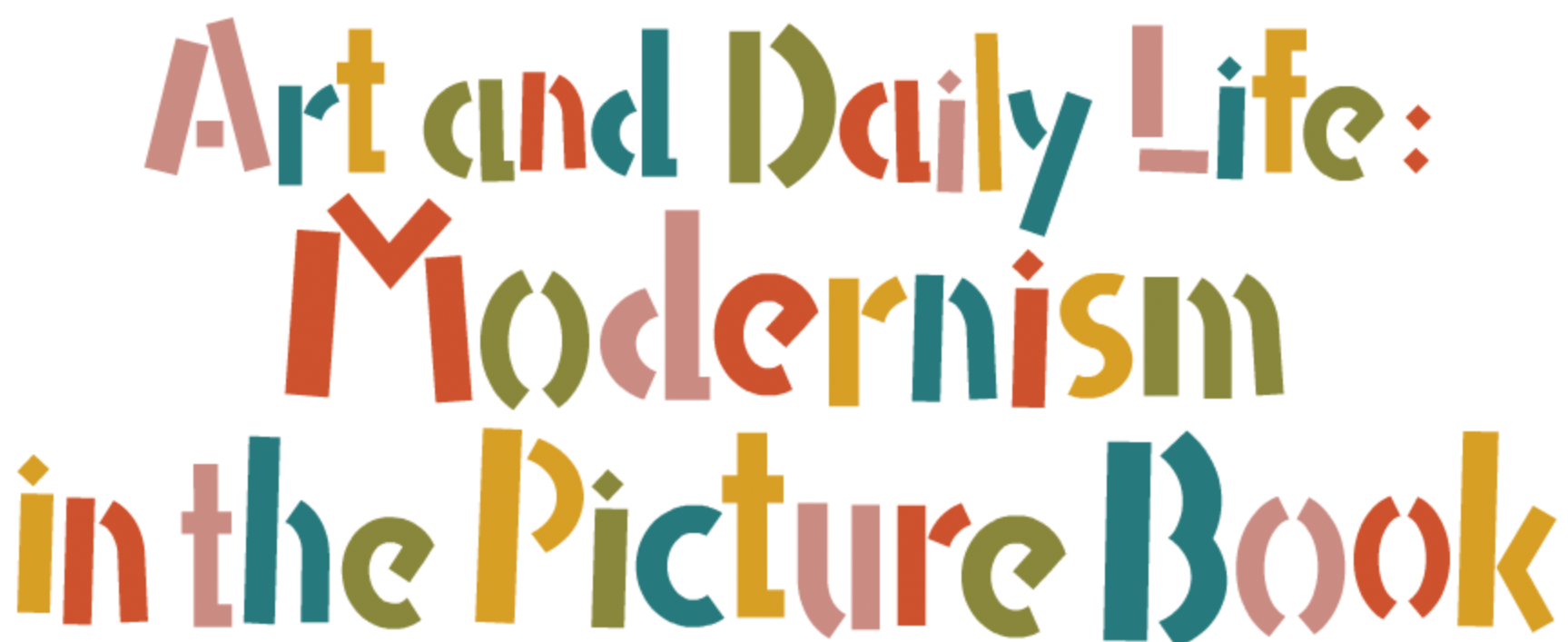本文
Bibliography

The Circus
Цирк
Raduga; Leningrad.
1928(1925),
12 pages.
290x230 mm.
© by permission of Aleksandr Marshak, Iakov Marshak, and Ada Lazo
We thank Mr.Aleksandr Marshak, Mr. Iakov Marshak, and Ms. Ada Lazo for giving permission to use The Circus.
1/15
The Circus
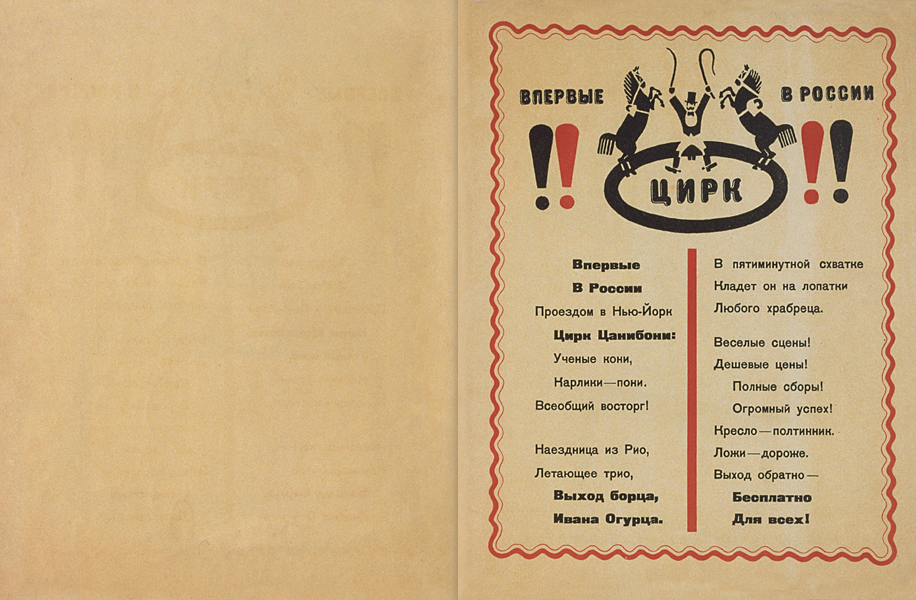
3/15 Push an image to enlarge
ВПЕРВЫЕ В РОССИИ ЦИРК. Впервые В России Проеэдом в Нью—Йорк Цирк Цанибони: Ученые кони, Нарлики — пони. Всеобщий восторг! Наеэдница иэ Рио, Летающее трио, Выход борца, Ивана Огурца. В пятиминутной схватке Hладет он на лопатки Любого храбреца. Веселые сцены! Дешевые цены! Полные сборы! Огромный успех! Кресло — полтинник. Ложи — дороже. Выход обратно — Бесплатно Для всех! (♪)
The Circus
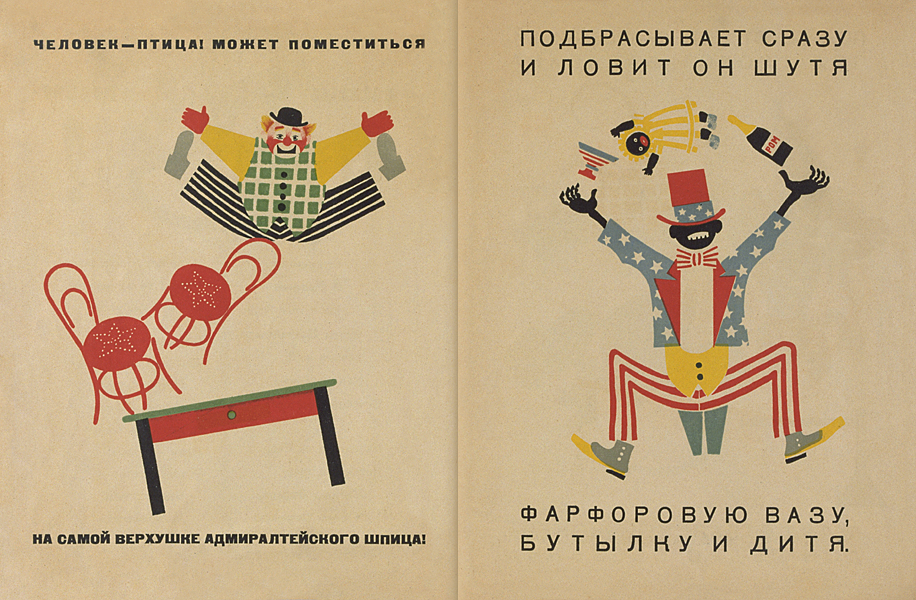
4/15 Push an image to enlarge
(♪) ЧЕЛОВЕК — ПТИЦА! МОЖЕТ ПОМЕСТИТЬСЯ НА САМОЙ ВЕРХУШКЕ АДМИРАЛТЕЙСКОГО ШПИЦА!
ПОДБРАСЫВАЕТ СРАЭУ И ЛОВИТ ОН ШУТЯ ФАРФОРОВУЮ ВАЭУ, БУТЫЛКУ И ДИТЯ.
ПОДБРАСЫВАЕТ СРАЭУ И ЛОВИТ ОН ШУТЯ ФАРФОРОВУЮ ВАЭУ, БУТЫЛКУ И ДИТЯ.
The Circus
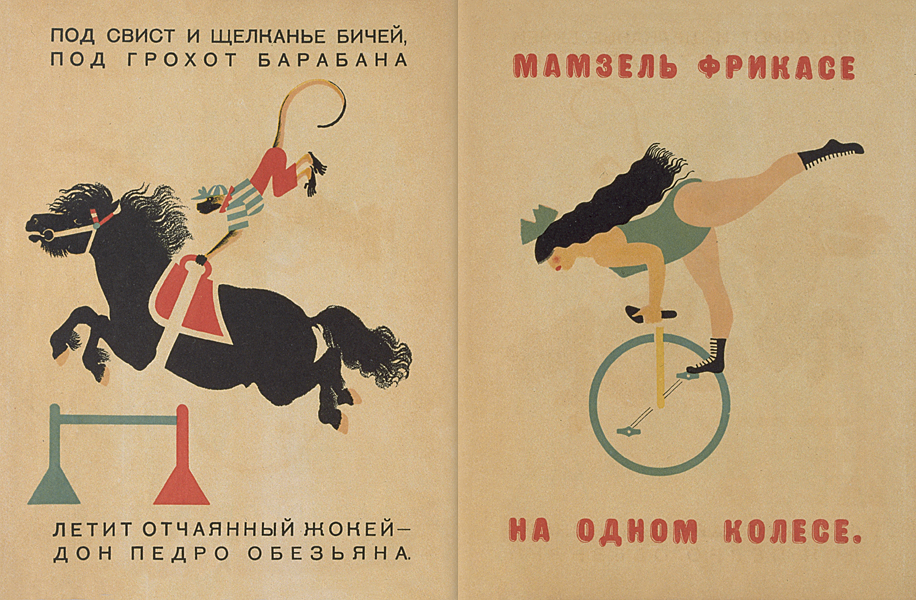
5/15 Push an image to enlarge
(♪) ПОД СВИСТ И ЩЕЛКАНЬЕ БИЧЕЙ, ПОД ГРОХОТ БАРАБАНА ЛЕТИТ ОТЧАЯННЫЙ ЖОКЕЙ — ДОН ПЕДРО ОБЕЭЬЯНА.
(♪) МАМЭЕЛЬ ФРИКАСЕ НА ОДНОМ КОЛЕСЕ.
(♪) МАМЭЕЛЬ ФРИКАСЕ НА ОДНОМ КОЛЕСЕ.
The Circus
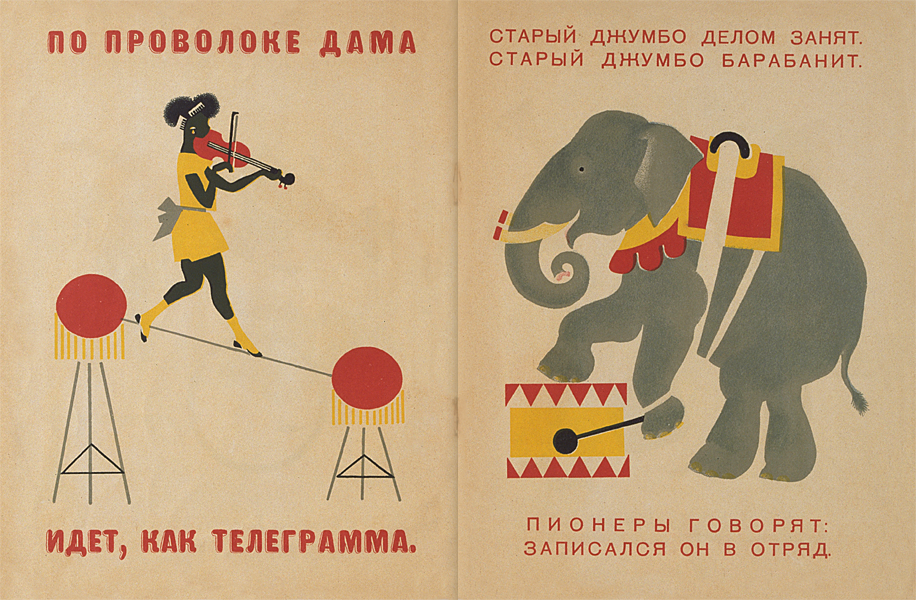
6/15 Push an image to enlarge
(♪) ПО ПРОВОЛОКЕ ДАМА ИДЕТ, КАК ТЕЛЕГРАММА.
(♪) СТАРЫЙ ДЖУМБО ДЕЛОМ ЭАНЯТ. СТАРЫЙ ДЖУМБО БАРАБАНИТ. ПИОНЕРЫ ГОВОРЯТ: ЭАПИСАЛСЯ ОН В ОТРЯД.
(♪) СТАРЫЙ ДЖУМБО ДЕЛОМ ЭАНЯТ. СТАРЫЙ ДЖУМБО БАРАБАНИТ. ПИОНЕРЫ ГОВОРЯТ: ЭАПИСАЛСЯ ОН В ОТРЯД.
The Circus
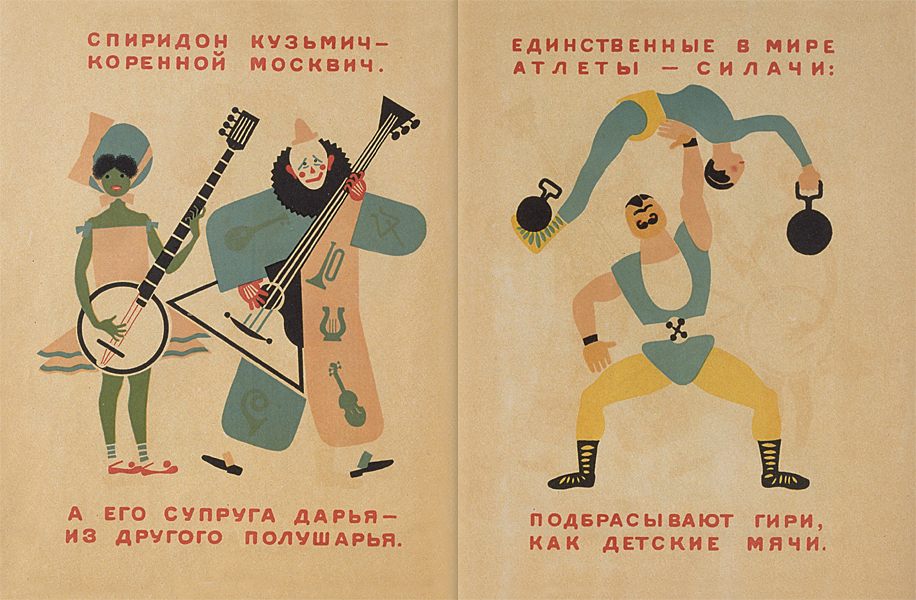
7/15 Push an image to enlarge
(♪) СПИРИДОН КУЭЬМИЧ— КОРЕННОЙ МОСКВИЧ. А ЕГО СУПРУГА ДАРЬЯ— ИЭ ДРУГОГО ПОЛУШАРЬЯ.
(♪) ЕДИНСТВЕННЫЕ В МИРЕ АТЛЕТЫ — СИЛАЧИ: ПОДБРАСЫВАЮТ ГИРИ, КАК ДЕТСКИЕ МЯЧИ.
(♪) ЕДИНСТВЕННЫЕ В МИРЕ АТЛЕТЫ — СИЛАЧИ: ПОДБРАСЫВАЮТ ГИРИ, КАК ДЕТСКИЕ МЯЧИ.
The Circus
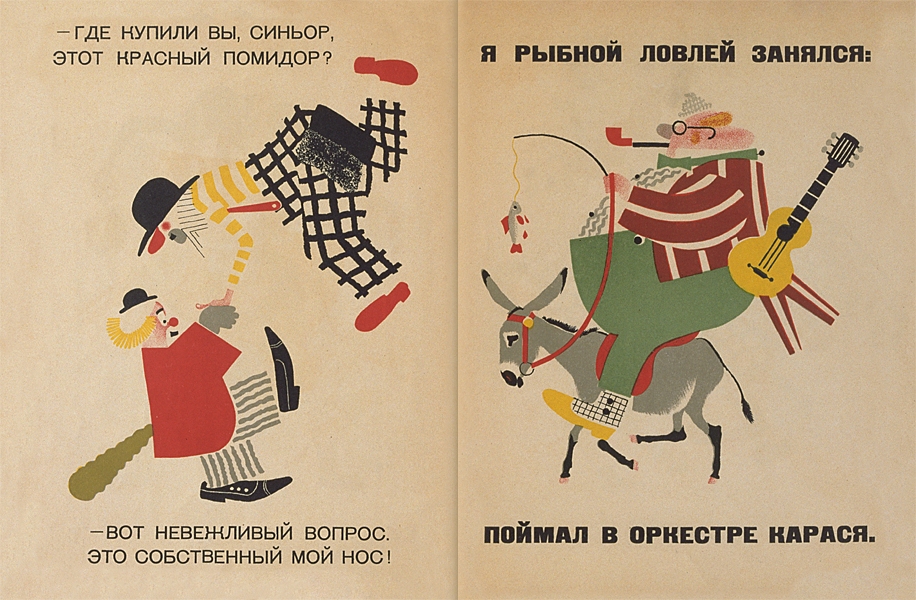
8/15 Push an image to enlarge
(♪) — ГДЕ КУПИЛИ ВЫ, СИНЬОР, ЭТОТ КРАСНЫЙ ПОМИДОР? — ВОТ НЕВЕЖЛИВЫЙ ВОПРОС. ЭТО СОБСТВЕННЫЙ МОЙ НОС!
(♪) Я РЫБНОЙ ЛОВЛЕЙ ЭАНЯЛСЯ: ПОЙМАЛ В ОРКЕСТРЕ КАРАСЯ.
(♪) Я РЫБНОЙ ЛОВЛЕЙ ЭАНЯЛСЯ: ПОЙМАЛ В ОРКЕСТРЕ КАРАСЯ.
The Circus
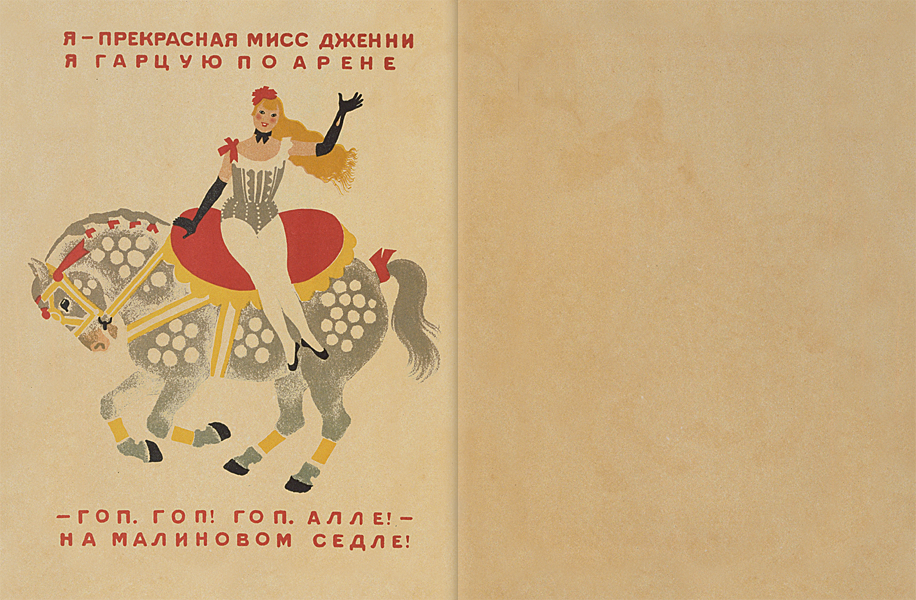
9/15 Push an image to enlarge
(♪) Я — ПРЕКРАСНАЯ МИСС ДЖЕННИ Я ГАРЦУЮ ПО АРЕНЕ — ГОП. ГОП! ГОП. АЛЛЕ! — НА МАЛИНОВОМ СЕДЛЕ!
No narration on page 10
The Circus

10/15 Push an image to enlarge
No narration on page 11
About the author 1/4
By Samuil Marshak (1887–1964)
Pictures by Vladimir Lebedev (1891–1967)\
1)
After the Russian Revolution and the establishment of the Union of Soviet Socialist Republics in 1917, the process began of creating a literature for the young people who would be the future leaders of the new country. Samuil Marshak put out many works of poetry, plays for children, and translations, together with Maksim Gorkii and Kornei Chukhovskii playing a leading role in establishing the foundations of Soviet children’s literature.Born in Veronezh, a southern part of Moscow as a son of poor Jewish factory craftsman, Marshak began writing poetry early in life, and his talent was eventually discovered by the well-known critic Vladimir Stasov, who introduced him to Gorkii, opening up for him the path into literature. He went to study at the University of London when he was twenty-five.
11/15
No narration on page 12
About the author 2/4
2)
After the Revolution of 1917 Marshak founded a children’s village for war orphans as well as a children’s theater. His first works of children’s literature were plays. In 1922 he organized the children’s literature studio in Leningrad (St. Peterburg) and trained many writers. In 1924 he became the head of the state publishing house Gozidat and, at the first Soviet Writers Congress (Sezd Sovetchikh Pisatelei) in 1934, presented a special report titled “Bol’shaya literature dlya malen’kikh” (Great Literature for Little People).Marshak’s poetry is bright, simple, clear and humorous. Many of his works have been favored and reprinted. He is well known in Japan also for his play for children “Dvenadtsat’ mesyatsev Slavyanskaya skazka” (Twelve Months) and the Slav story, known by its Japanese title “Mori wa ikite iru” (The Forest Is Alive).
12/15
No narration on page 13
About the author 3/4
3)
Lebedev was a leading illustrator of the golden age of Soviet picture books. Born in Petersburg, he studied at the Akademiya khudozhestv (Academy of Art). After the Revolution from 1920 to 1922 he worked for Okon Rosta (Rosta Window), making political posters in St. Petersburg. In 1924 he was put in charge of the art department at Gozidat.As an artist Lebedev was called the perfect match for Marshak in pursuing the potential of picture books. Together they created many masterpieces including The Circus, Ice Cream, Baggage, and Yesterday and Today. The original free, satirical, and humorous quality of Lebedev's art that had developed under the influence of the Russian avant-garde was not accepted, however, with the advent of Socialistic Realism, and he was severely criticized in the party organ Pravda. Accordingly, toward the end of the thirties Lebedev’s style changed into more lyrical expression, as exemplified by such works as Twelve Months (short stories, 1943) and Tikhaya skazkav (Quiet Stories).
13/15
No narration on page 14
About the author 4/4
4)
It is said that Circus (1925) started with Lebedev’s artwork, for which Marshak subsequently wrote the poems. The book brims with the action and fun of the circus, featuring an innovative structure reminiscent of poster art with its succession of humorous and colorful scenes. The cover page displaying the names of both the poet and the artist in large red letters of equal size is testimony to the collaboration between the two in creating this picture book.
14/15
Contents
15/15
